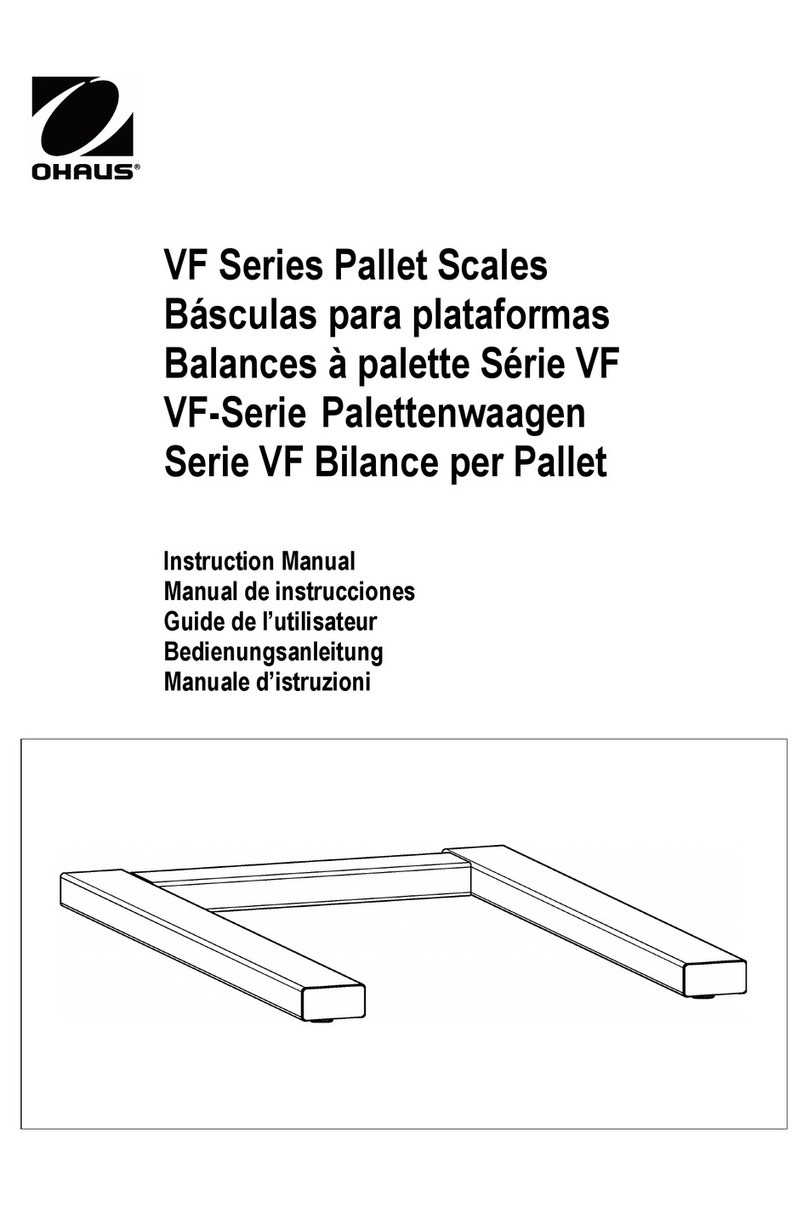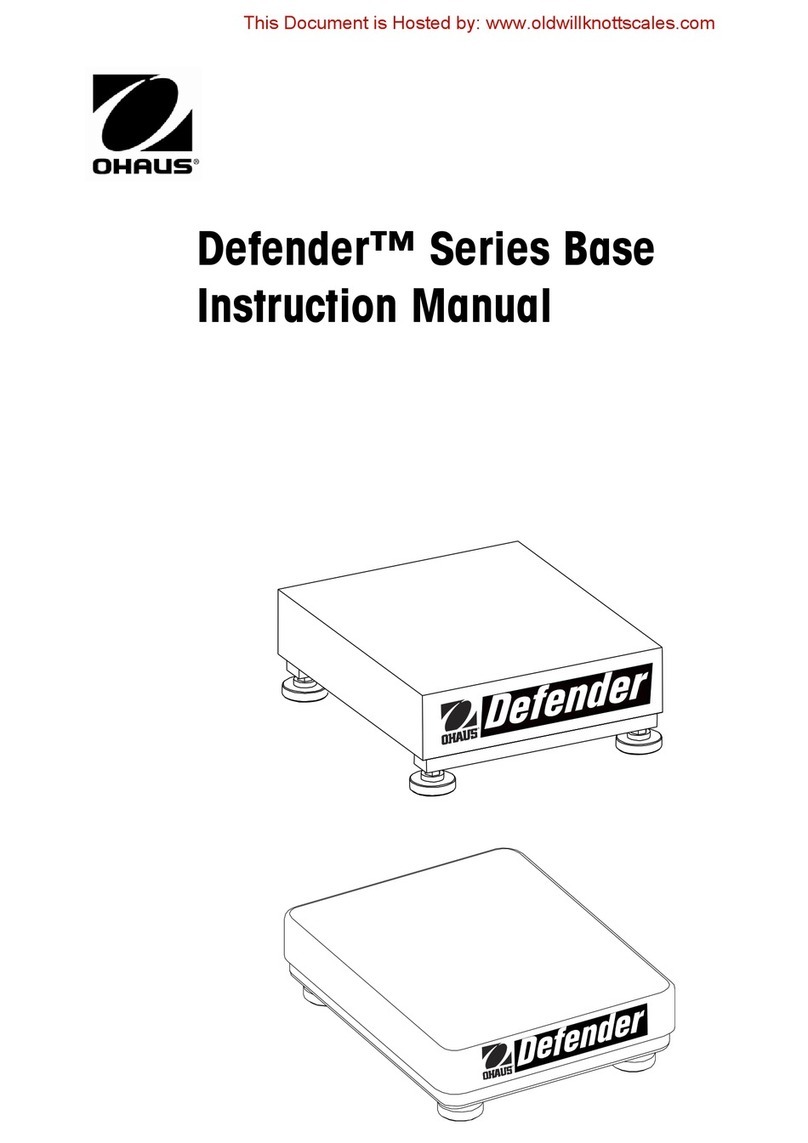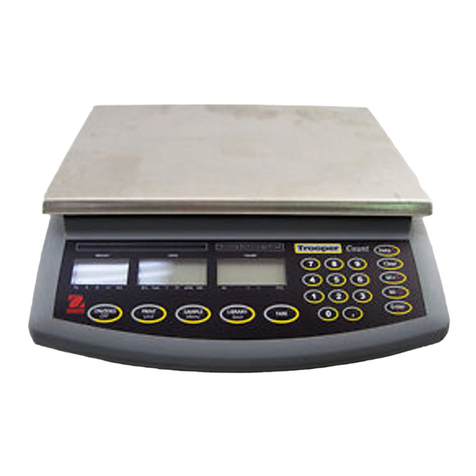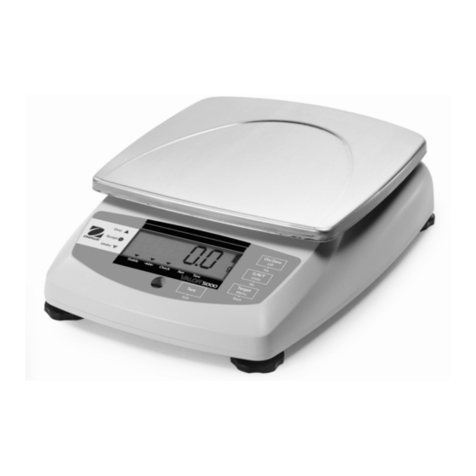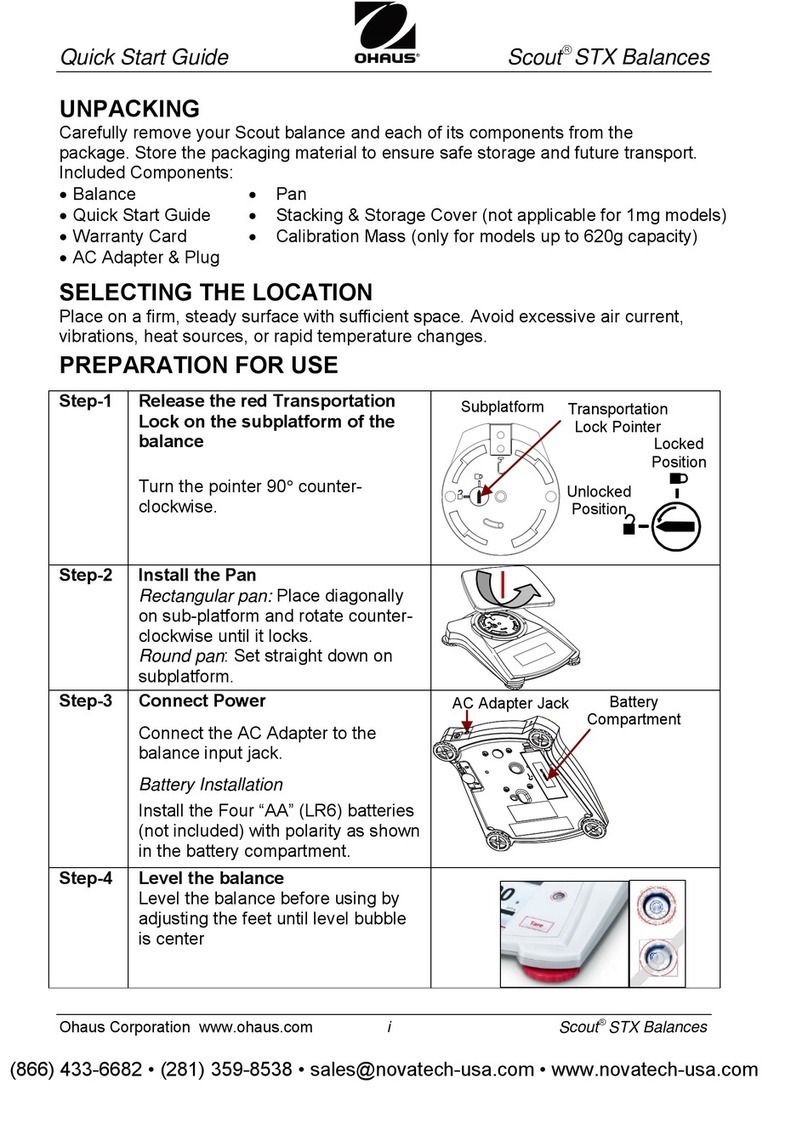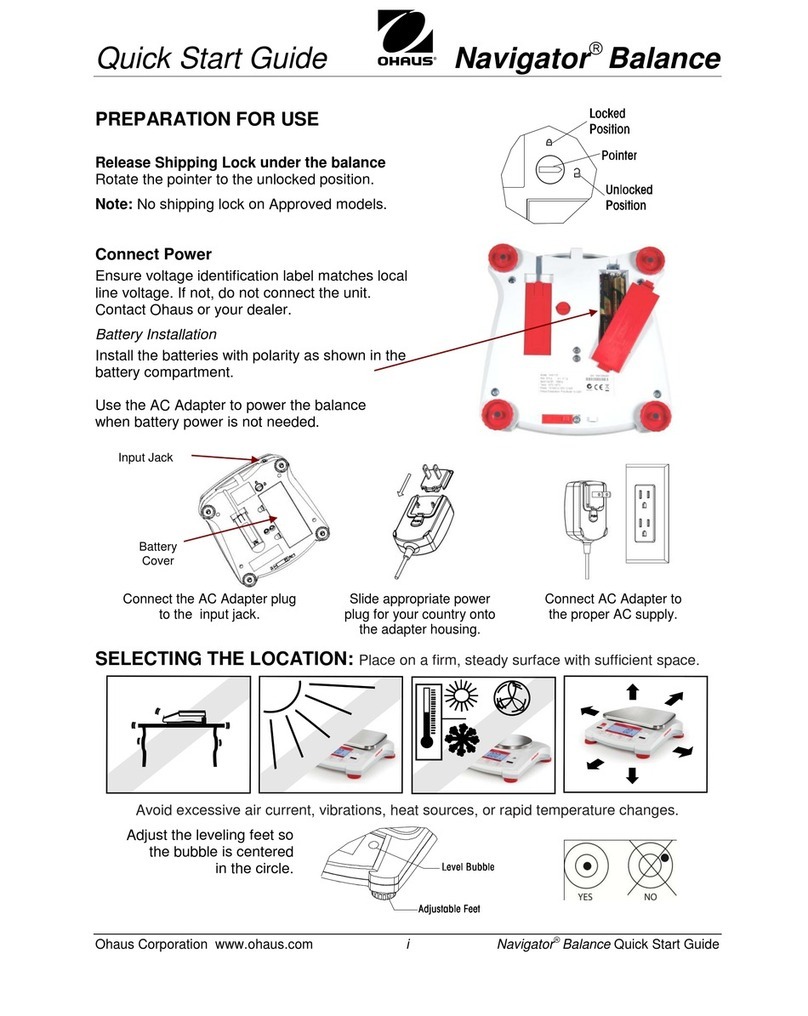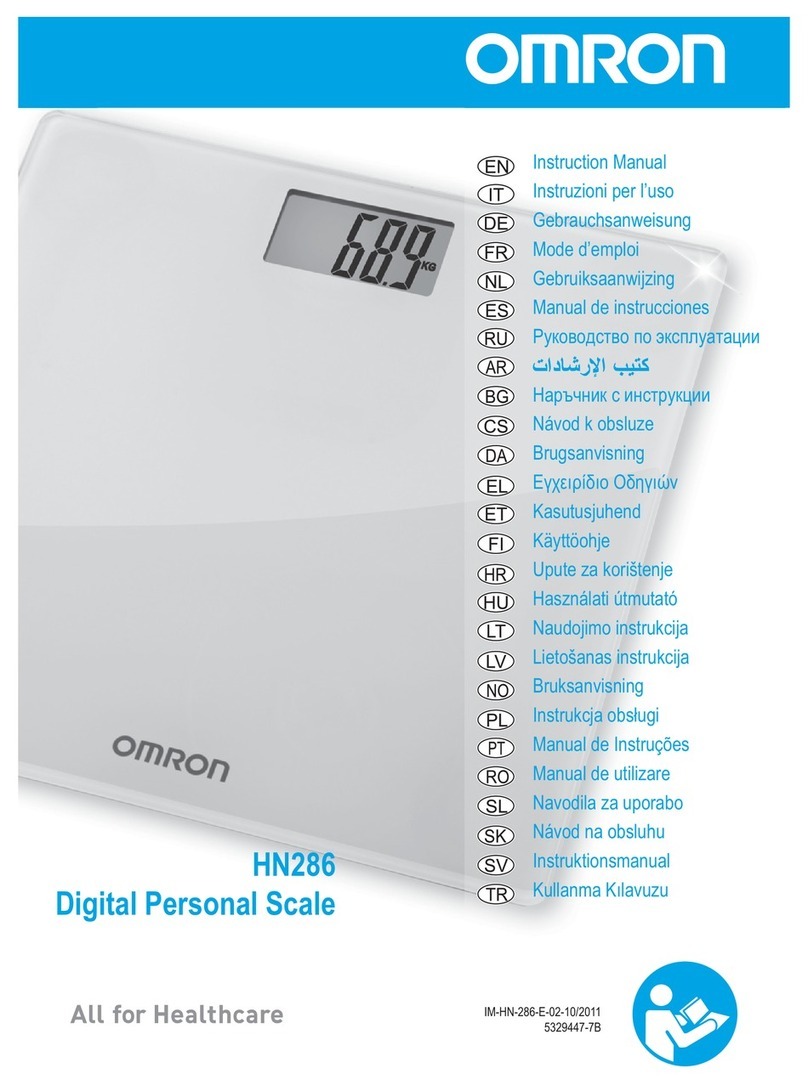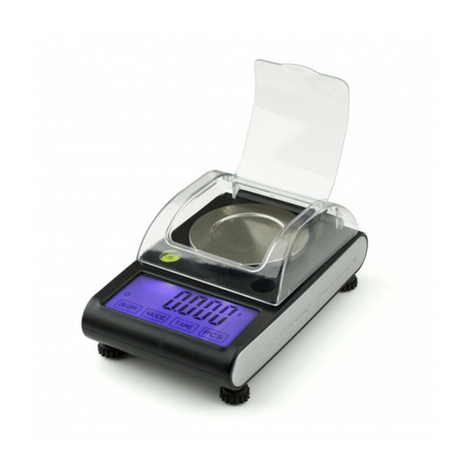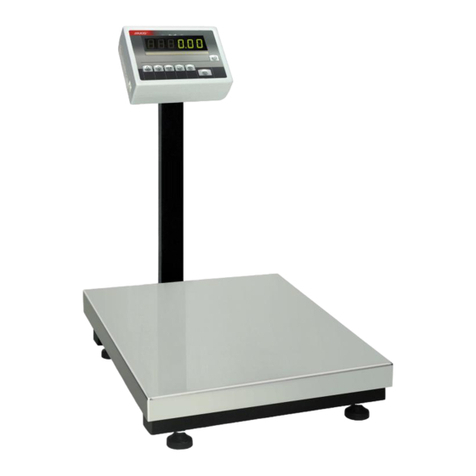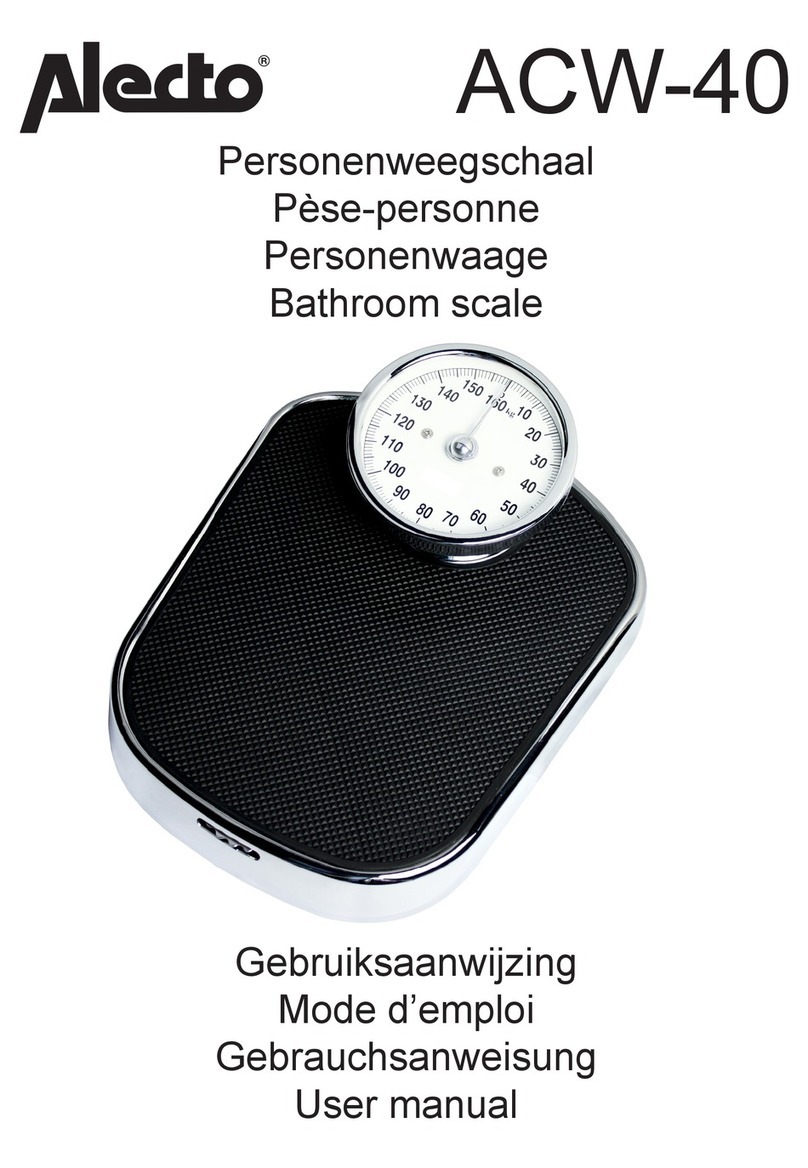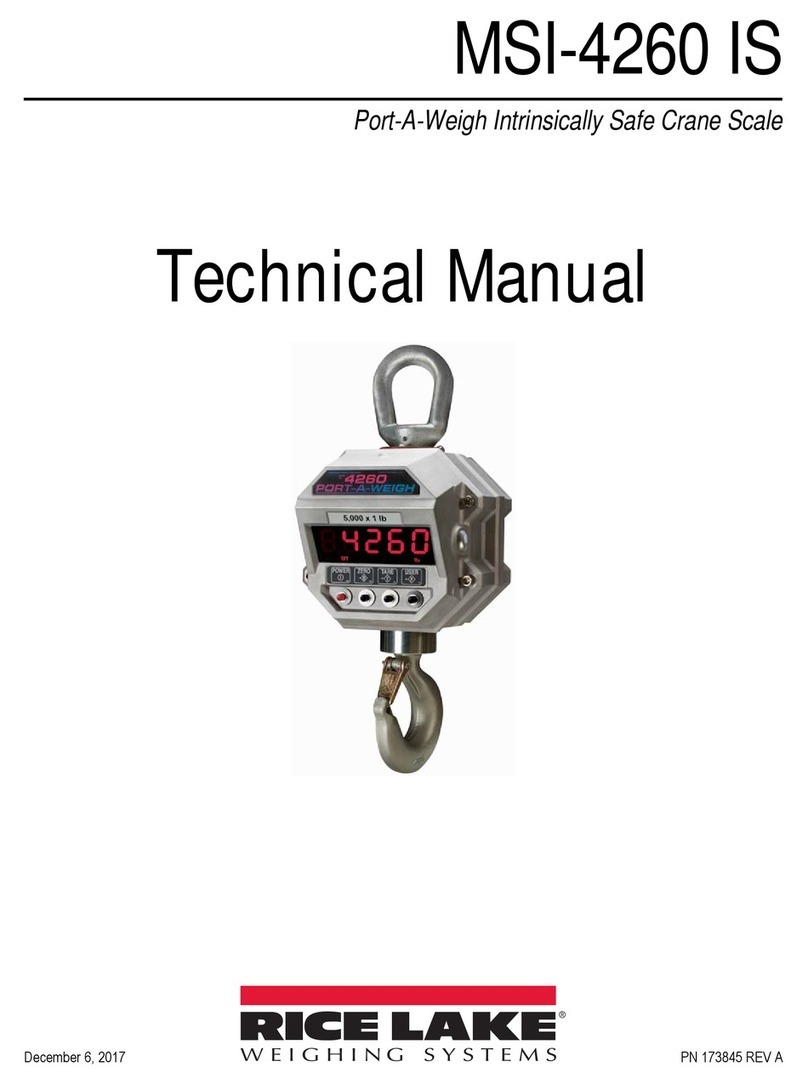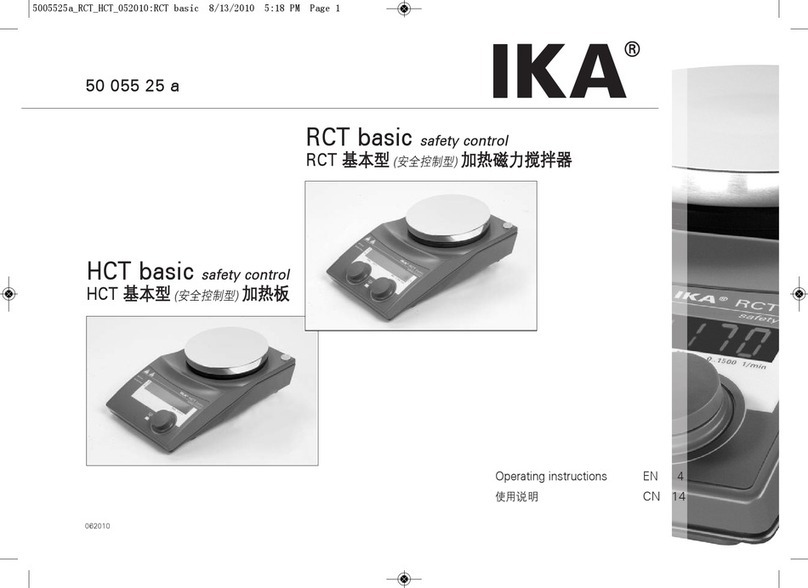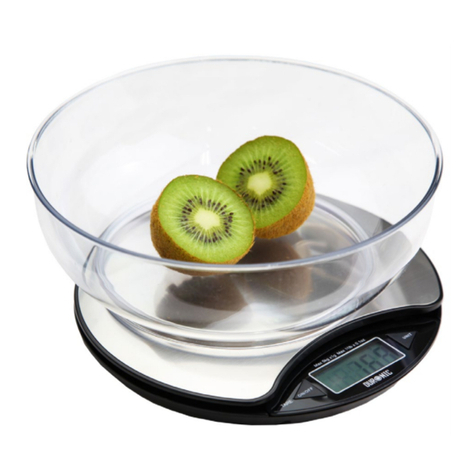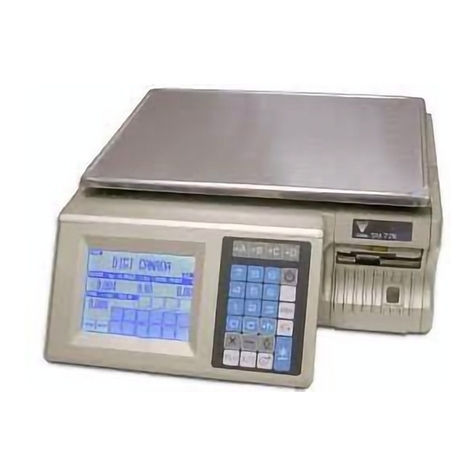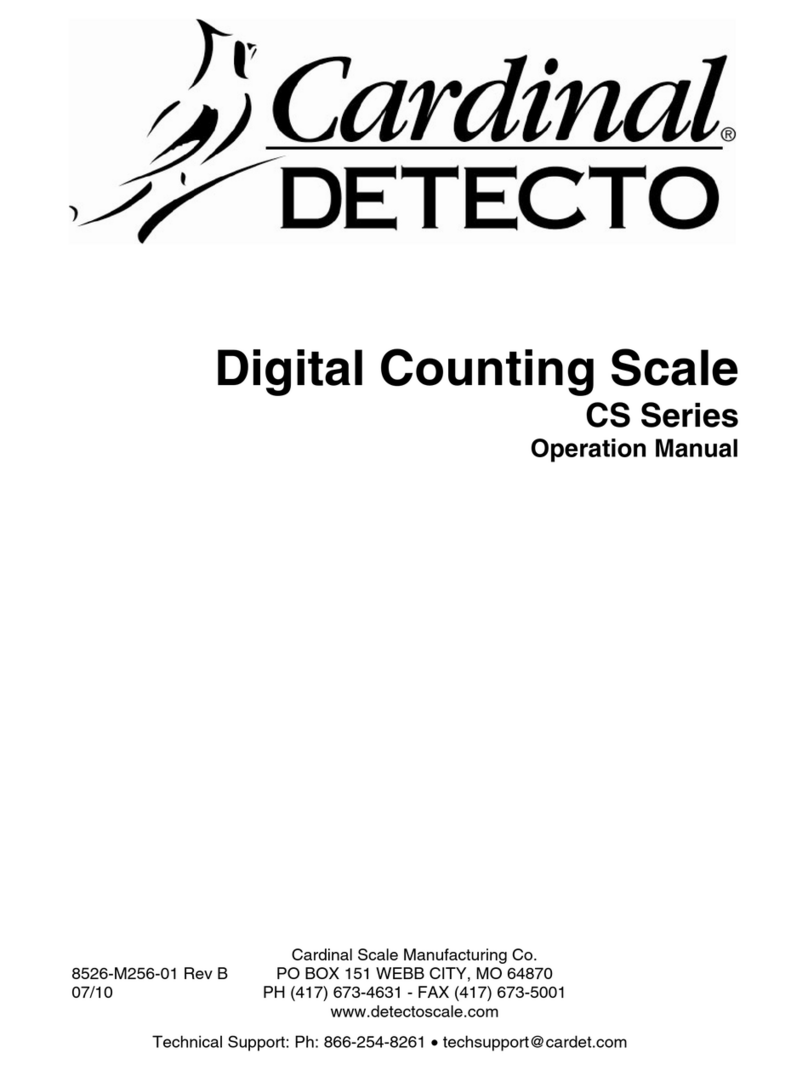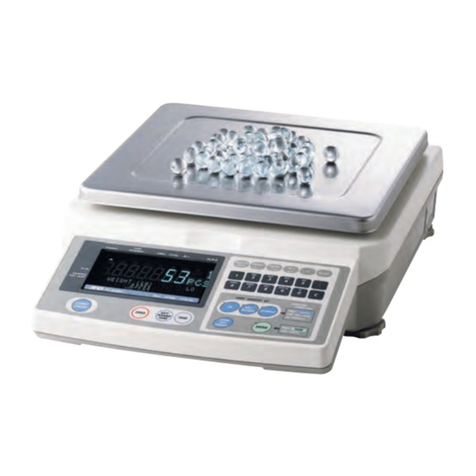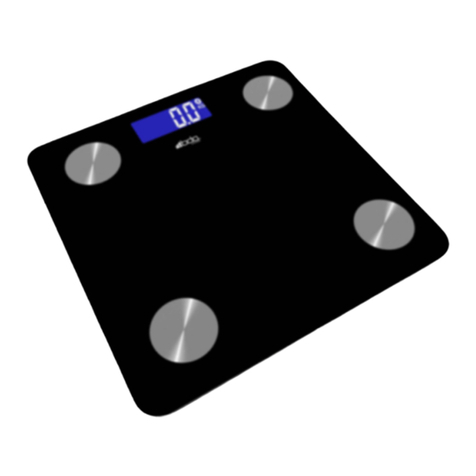
The scale should be zero balanced before use and checked periodically during
use for maximum accuracy and protection against error.
MAGNETIC DAMPING
Your ʺ5-0-5ʺReloading Scale is equipped with magnetic damping which causes
the beam to come to rest quickly without affecting sensitivity or accuracy.
It operates on the principle of a permanent magnetic field resisting the motion of
a non-magnetic, copper damper vane attached to the beam.
The damping magnets are positioned inside the base on both sides of the slot
that the damper vane travels in.
The only maintenance required is to keep this slot free of magnetic particles
which could interfere with free movement of the damper vane. The magnetic
damping is effective at all loads and will speed up weighing.
HOW TO WEIGH
To weigh an unknown, such as the throw of charge from a powder measure,
place it in the scale pan. Move the large poise to the first notch which causes the
beam pointer to drop below zero and then move it back one notch. Do the same
with the middle poise. Then move the small poise to the notch which brings the
beam pointer closest to zero. The weight of the unknown is the sum of the three
poise readings.
GENERAL
Use the reloading equipment as the manufacturer recommends.
Study the instructions carefully and become thoroughly familiar with the
operation of the product. Don’t take short cuts.
Observe ʺgood housekeepingʺin the reloading area. Keep tools and
companents neat, clean and orderly. Promptly and completely clean up
primer and powder spills.
Reload only when you can give your undivided attention. Do not reload
when fatigued or ill. Develop a reloading routine to avoid mistakes.
Avoid haste - load at a leisurely pace.
Always wear adequate eye protection. You assume unnecessary risk
when reloading without wearing safety glasses.
Don’t take short cuts.
LOADING DATA
Use only laboratory tested reloading data.
OBSERVE ALL WARNINGS ABOUT THE USE OF MAXIMUM LISTED
LOADS.
PRIMERS AND POWDER
Store primers and powder beyond the reach of children and away from
heat, dampness, open flames and electrical equipment.
DO NOT use primers of unknown identity. To destroy unwanted
primers, soak in oil for a few days and then bury.
Keep primers in original factory container until ready to use. Store
unused primers in the same factory packaging for safety and to
preserve their identity.
The scale can also be used to weigh out predetermined powder charges, either
alone or in combination with a powder measure set to throw a light charge.
In either case the desired final weight of the charge is preset on the poises. This
will cause the beam pointer to fall below the zero graduation. Add powder to the
pan until the beam balances.
When making repeated weighings in this manner, avoid weighing errors by
making sure that the poises remain in their correct positions and are not
accidentally moved.
HOW TO CARE FOR YOUR SCALE
Keep the scale clean at all times and be particularly careful to prevent the
accumulation of dirt on the pivots and bearings. Never apply oil or any lubricant to
the pivots or bearings; this will lower the accuracy of the scale.
SAFETY
Reloading is an enjoyable and rewarding hobby that is easily conducted with
safety. But carelessness or negligence can make reloading hazardous. This
product has been designed from beginning with the user’s safety in mind.
As with any reloading operation, some safety rules must be followed. By
observing these few rules, the chance of a hazardous occurrence causing
damage or injury becomes extremely remote.
DO NOT store primers in bulk. The blast of just a few hundred primers
is sufficient to cause serious injury to anyone nearby.
DO NOT force primers. Use care in handling primers.
DO NOT use any powder unless its identity is positively known.
Discard all mixed powders and those of uncertain or unknown identity.
If you use a powder measure, replace the lids on both the powder
hopper and powder can after the powder hopper has been filled.
Before charging cases, settle the powder in the powder hopper. Throw
and check the weight of at least ten charges. This will assure you that
the correct powder charge is being thrown.
After a reloading session ends, pour the remaining powder back in its
original factory container. This will preserve the identity and shelf life of
the powder.
DO NOT smoke while handling powder or primers.
RECORD KEEPING
Keep complete records of reloads. Apply a descriptive label to each
box.
Since OHAUS has no control over the choice of components, the manner in which
they are assembled, the use of this product, or the guns in which the resulting
ammunition may be used, no responsibility, either expressed or implied, is
assumed for the use of ammunition reloaded with this product.
IMPORTANT
Please read these instructions very carefully in order to obtain optimum results.
Save these instructions for future reference.
www.GlobalTestSupply.com
Find Quality Products Online at: sales@GlobalTestSupply.com
www. .com information@itm.com1.800.561.8187




